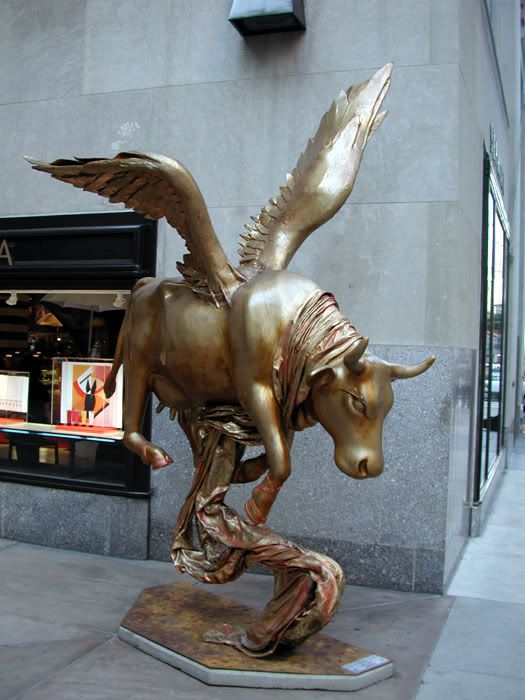
Posted on 09/30/2005 1:09:46 PM PDT by F14 Pilot
Tehran, 28 September 2005 (CHN) -- Archaeological excavations in Gohar Tepe, in Mazandaran province in Iran, has led to the discovery of the remains of the statues of some cows which were most probably used in religious ceremonies.
The discovery of these sculptures indicates that the people of the region worshiped cows 3000 years ago.
Mazandaran is one of the most ancient provinces in Iran. Archaeological excavations indicate that the province has been inhabited by human beings since 400,000 years ago until the present time, and that around 5000 years ago, urbanization flourished in the area. Gohar Tepe is a proof to this claim.
"Some cow statues have been discovered in the archaeological excavations of Gohar Tepe, one of which is left almost intact. These sculptures which are in shape of rhytons were being used in religious ceremonies," says Ali Mahforouzi, head of the excavation team of Gohar Tepe, Mazandaran, who is undertaking the forth season of excavations in the historical site.
According to Mahforouzi, the discovered rhytons are broken but the one that is left intact and is bigger than the rest reveals artistic mastery. Rhytons were mostly used in religious places, but the ones discovered in Gohar Tepe of Mazandaran were found inside a dustbin in part of an ancient structure.
Discovery of cultural evidence such as clay pieces around the structure indicates that the rhytons belong to the Iron Age (the first millennium BC), but more studies are still needed to determine their exact period.
Mahforouzi believes that rhytons reflect the beliefs of the ancient people of the region. These statues are evidence that the people of the region worshiped oxen and humped cows 3000 years ago. "Even today we can see some kind of respect towards the animals in the region," added Mahforouzi, referring to kinds of cows being regarded as symbols of hard work and fertility.
The biggest intact rhyton discovered is about 30 cm long, 12 cm high and 15 cm wide. Archaeologists consider it as a unique discovery in Mazandaran province, and believe that with the discovery of the main worship place, more rhytons and statues could be found.
The archaeological excavations in Gohar Tepe continues for 2 months, and the team of archeologists are to determine forms of urban life 5000 years ago, remains of which are evident in Gohar Tepe.

"There's the Beef!"
Finally an answer to the question.
Were the question, "Where's the pork?" the answer would be in Hillary's pants.
I could really go for steak after reading that.
LOL!
GooD!
I guess so
Holy Allah!!!!, I mean COW!!!!
"The discovery of these sculptures indicates that the people of the region worshiped cows 3000 years ago."
Seems I already read about people of that area doing that in some book somewhere.
"the answer would be in Hillary's pants."
ha ha. She puts her pen!s on one strap at a time.
HOLY COW! Imagine how he could mispronounce "Mazandaran".
Perhaps part of the worship was humping cows.

Picture of one of the restored statues.
NO! It was Phil Rizzuto who said "Holy cow"
Disclaimer: Opinions posted on Free Republic are those of the individual posters and do not necessarily represent the opinion of Free Republic or its management. All materials posted herein are protected by copyright law and the exemption for fair use of copyrighted works.